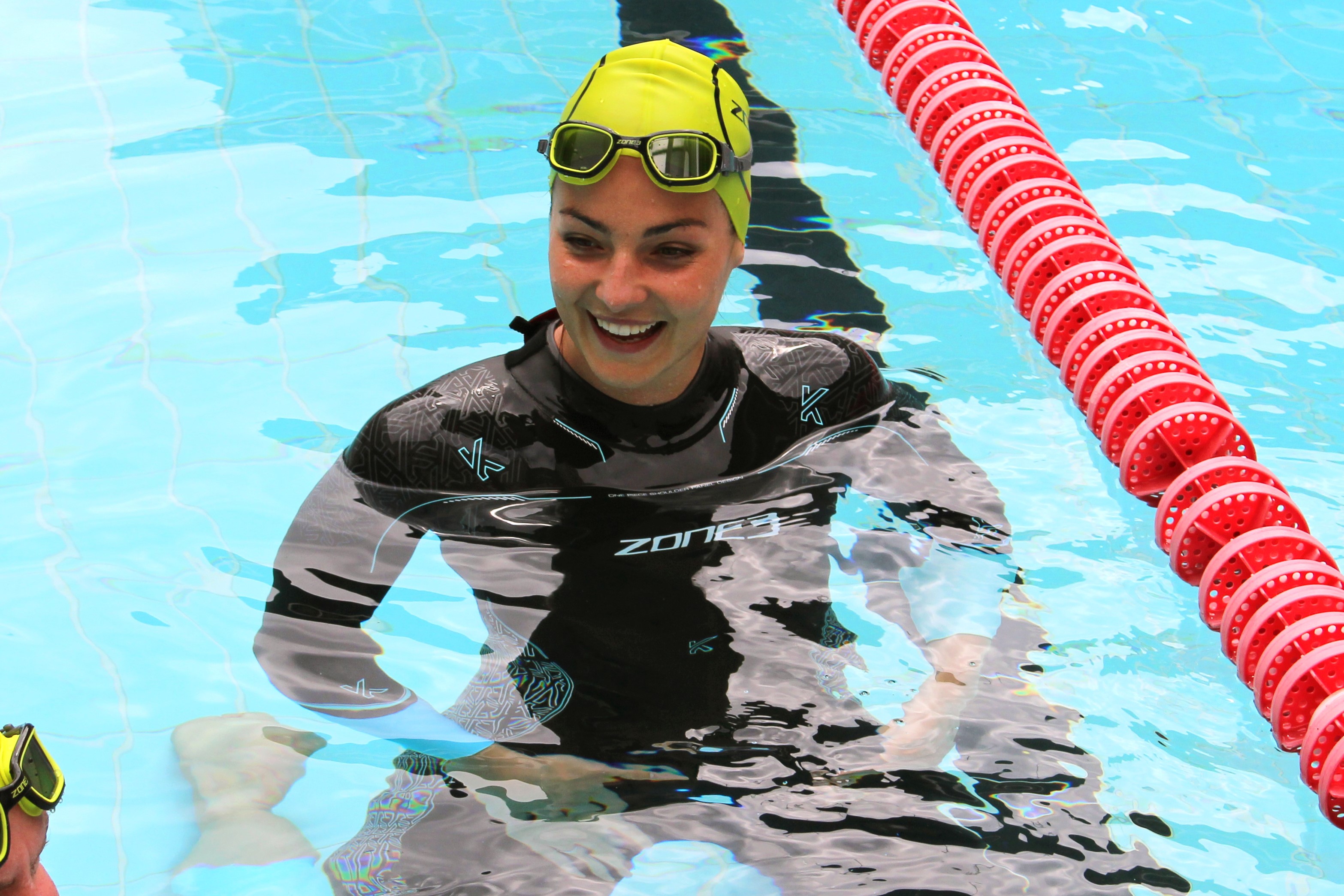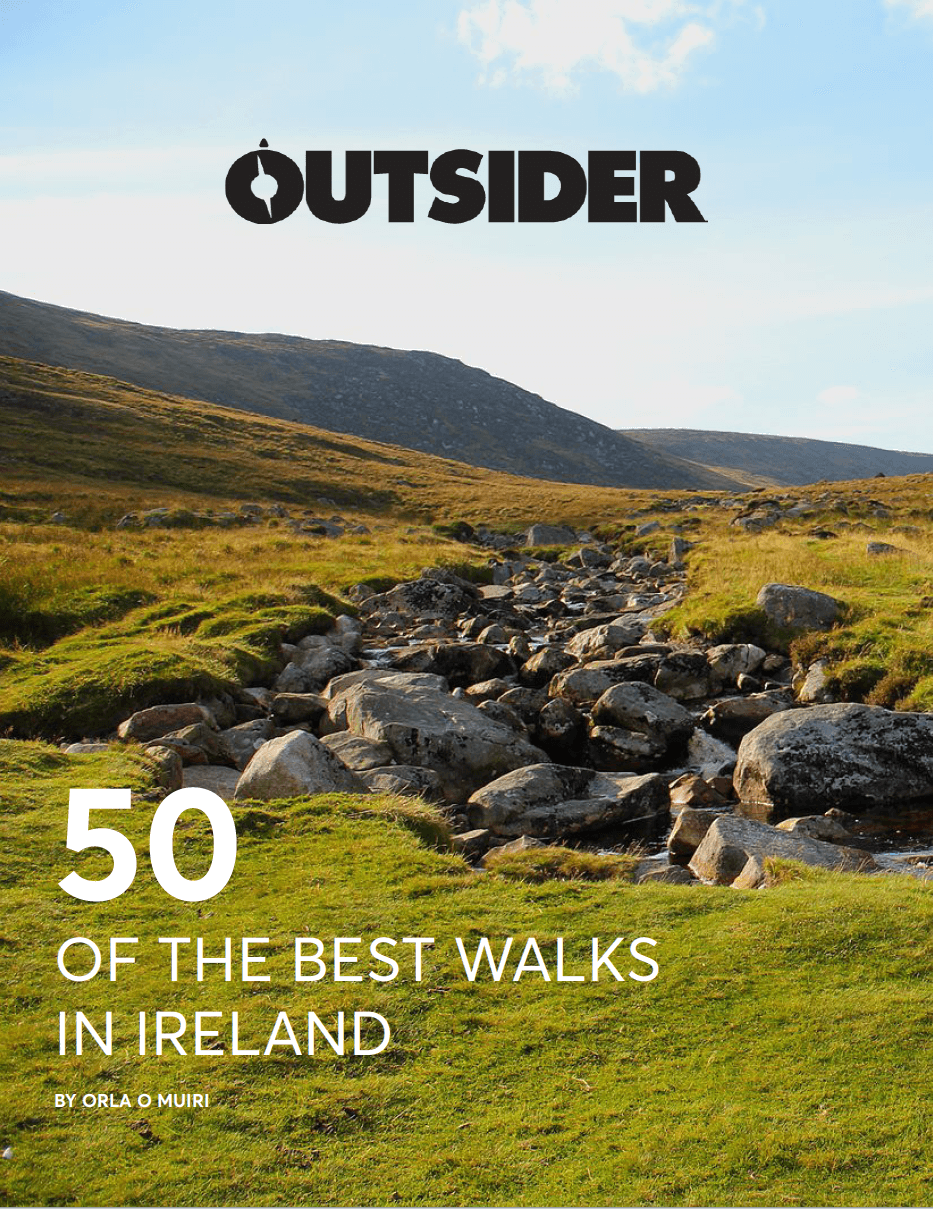Venturing into open water for the first time is a daunting experience for many. Gone are the confines of the swimming lane and the comfort of a wall every 25-50 metres. The open water brings the element of the unknown, especially when you are swimming out of your depth. But if you can overcome the fear, you will never go back. The feeling of freedom cannot be beaten. We have enlisted the help of Olympic open water swimmer, Keri-Anne Payne, who has a number of tips and tricks for overcoming the fear of swimming in open water.

It’s vital to firstly sit down and work out exactly what it is that you’re scared of when venturing into open water swimming. It can be easy to get panicked or worked up about swimming in the open water, but by breaking down the fears and rationalising them they can be overcome!
Many first-timers are worried about (amongst others): not seeing the bottom of the water, fish (or sharks!), cold water shock, breathing issues.
Open Water Swimming: Top Tips from Olympian Keri-Anne Payne
1. Fear caused by lack of visibility/not being able to see the bottom.
As with many open water fears, the key is in starting on a small scale and building things up slowly. A very short open water swim, close to the shore or lake edge for your first attempt will provide some comfort. Focusing on a landmark in the distance, a buoy or other nearby swimmers is a perfect way to calm your thoughts about these issues. It is also possible to train yourself to cope with the murky dark nature of some open water swim locations. Next time you’re swimming in a pool, try closing your eyes every time your face is submerged and opening your eyes once they are out of the water. Although this will feel strange at first – it will provide comfort in knowing that you can swim without being able to follow a black line on the bottom of the pool!
2. Fears of fish and sharks.
Obviously, safety is paramount and is number one priority when open water swimming, so if you DO live in an area with sharks/alligators/other dangerous animals please never do anything reckless! At risk of writing a cliché, fish and other marine life will be far more afraid of you than you will be of it, so will head in the opposite direction and give you a wide berth. The fact that there are creatures living in the open water means that the lake/sea is healthy which can only be a good thing.
3. Cold water shock.
Cold-water shock can cause panic if you don’t know what it is or how to control it, as it can “take your breath away”. This shock only lasts up to 90 seconds and can be controlled by carefully monitoring your breathing. Focusing on breathing in for a count of four, and out for a count of four is a great way to get air to the lungs. Holding your breath or keeping the air in your throat is a common reaction to cold-water shock and only makes things worse!
4. Fear of not being able to breathe properly.
Breathing is such an important part of straight-line swimming – and it’s also the number one thing that stops people from reaching their swimming potential. I always start with breathing when I’m coaching, whether the person in the water is a beginner or a time-chaser.
When I am at the pool I often see people sprinting 50 metres, then having to stop for about two minutes just to get their breath back. They’re not unfit, they just need to be more efficient when they breathe. The most important thing to remember is that it should feel natural.
The problem usually happens because you’ve taken in such a huge lung full of oxygen that your instinct is to get rid of the same amount that you have taken in, which means your breathing starts spiking up and down erratically, and that just isn’t sustainable over any kind of distance. If you were going for a jog you wouldn’t run for a bit, then stop and gulp for air, then run again. You’d breathe as you were going along; make it a part of what you were doing. Swimming should be the same.
Keep your breathing relaxed and consistent, and you’ll be amazed by how much easier you’ll find swimming. Breathe in through your mouth when your head is to the side, and breathe out through your nose when your head is in the water. And that’s it. It doesn’t matter whether you only breathe on one side or on both (bilaterally); the most important thing is just to stick to a regular rhythm, and take in only as much air as you actually need.
Like most things, efficient breathing can take a little bit of getting used to, but once you’ve got the hang of it you’ll feel so much more relaxed.
7 pieces of kit every open water swimmer should have
Check out our Hard as Nails podcast:
Like this? You should check these out:










